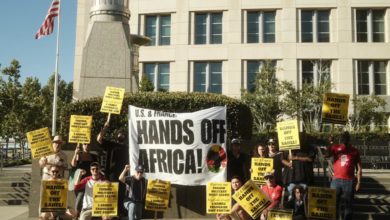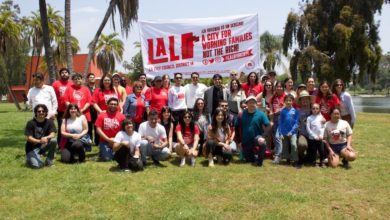In 2011, California prisoners organized two waves of hunger strikes to protest heinous prison conditions and abuses. The hunger strike actions, initiated by a group of inmates in the Secure Housing Unit of Pelican Bay State Prison, spread to one-third of California’s prisons and at their peak included the supportive participation of more than 12,000 prisoners.
Central among their demands was ending the practices and policies of extreme solitary confinement, in which prisoners are subjected to indefinite isolation, sensory deprivation and other forms of abuse and torture, in many cases for decades on end.
In California, thousands of prisoners are subject to agonizing, indefinite isolation, not because of illegal behavior or because they were found guilty of committing a criminal act, but because the California Department of Corrections and Rehabilitation has given them a “gang classification” based on unsubstantiated allegations of prison informants or even innocent association.
“Gang classification” or status is also a convenient catchall that can be used by prison authorities to throw inmate activists into the oblivion of isolation.
One year after the hunger strikes
The hunger strikers called for a temporary suspension of the protests after the CDCR agreed to make changes. However, in the year since Oct. 13, 2011, the CDCR has not honored its end of the agreement. The thousands of inmates in SHUs and Administrative Segregation Units remain subject to the same torturous conditions as before.
In what could signal the beginning of a new round of action, the principal prisoner representatives in the Pelican Bay State Prison SHU Short Corridor Collective, took two decisive actions coinciding with the one-year anniversary of the failed agreement.
In an open letter, entitled “Stop the Torture Now,” to California Gov. Jerry Brown, the prisoners remind Brown that “back in May/June of 2011 we respectfully made you personally aware of the serious problems. Your failure to take appropriate corrective action has enabled our decades of torturous pain and suffering to continue. … The perception is that you are condoning this mass prisoner torture program going on in CDCR’s system….”
Brown could end the torture overnight with the stroke of pen by ordering ordering the secretary of the CDCR system to immediately halt such practices.
Agreement to end hostilities
Of monumental importance is a historic Agreement to End Hostilities between racial groups in California prisons and jails, issued by representatives of the Short Corridor Prisoner Collective, which went into effect on Oct. 10.
The agreement states, “If we really want to bring about substantive changes … now is the time for us to collectively seize this moment in time, and put an end to more than 20-30 years of hostilities between our racial groups.
“Therefore, beginning on October 10, 2012, all hostilities between our racial groups … will officially cease.”
With this call for unity, the prisoners are hoping to disable their jailers’ most effective weapon: divide and conquer. The agreement stresses that “if personal issues arise between individuals, people need to do all they can to exhaust all diplomatic means to settle such disputes; do not allow personal, individual issues to escalate into racial group issues!”
“In conclusion,” the statement reads, “we must all hold strong to our mutual agreement from this point on and focus our time, attention, and energy on mutual causes beneficial to all of us [i.e., prisoners] and our best interests. We can no longer allow CDCR to use us against each other for their own benefit!”
This initiative of the Short Corridor Prisoner Collective is an attempt to lay the basis for future struggle by closing ranks against their jailers. It is the CDCR administration, who despite all their public hand wringing over gang violence, actually promote it. If they did not, then why is the CDCR not celebrating the Agreement to End Hostilities? Why are copies of the agreement not being mass produced and distributed to California’s entire prison population by the CDCR?
Prisons and jails are filled with poor and working-class people and not with criminal Wall Street bankers or war profiteers. One in every 33 adults in the United States is either in jail or prison, on parole or on probation. It is clear that the struggle of our class for unity and organization extends to both sides of the prison wall.






